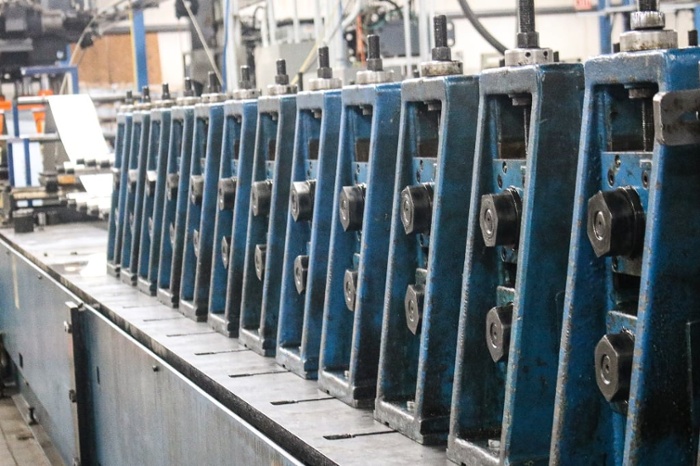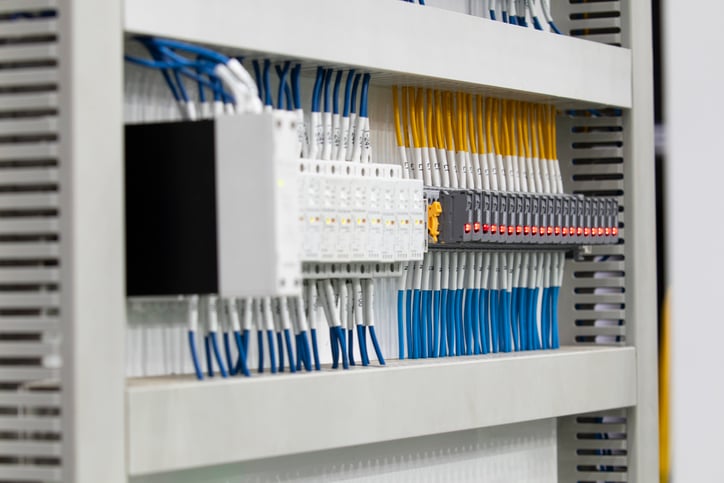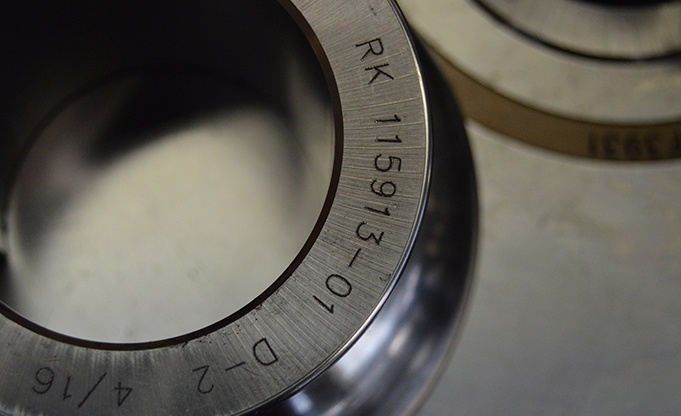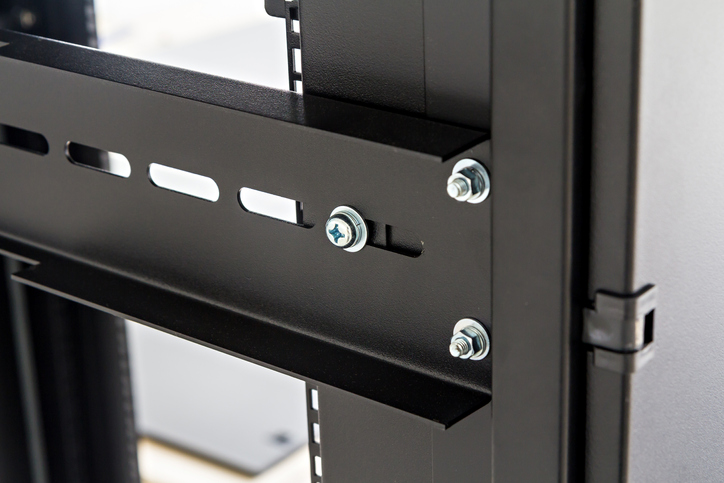Understanding The Roll Form Tooling Process

As far as metal forming techniques go, roll forming has long been a standard for OEMs. You’re probably already familiar with its numerous advantages, including:
Roll forming is especially ideal for OEMs looking for large quantities of long, slender parts.
But it isn’t often that we take a look behind the scenes to see how this is accomplished.
What is roll form tooling? How does it get installed, how is it set up, and what does the term “set up” even mean? Let’s explore:
Learn More About Partnering With a Roll Forming Company
Learn more about finding the right detail-oriented partner to source your parts. Check out our guide to partnering with a roll former:
What is Roll Form Tooling?
Roll form tooling refers to the combination of tools, dies, and machinery used in the roll forming process that shapes continuous metal coils into specific profiles.
Tooling is typically made of D2 tool steel – a durable, long-lasting metal hard enough to shape other metals in the forming process.
Installation and Setup of Roll Form Tooling
The setup of roll forming tooling is a meticulous and multi-step process requiring attention to detail.
But first – a detour into music history:
Did you know the founder of Boston (the band) was an engineer? He received both his bachelor’s and master’s degrees from MIT and worked at Polaroid.
It took him five years to write and record the song “More Than a Feeling,” as he fine-tuned the demo, playing all the instruments himself in his DIY basement/studio.
Why this segue into Tom Scholz? Because his engineering, his persistence, and his insistence on methodically layering sounds to form a near-technically-perfect song all paid off. Boston (their self-titled record) sat atop the debut album charts for years before being toppled.
Just like crafting the perfect music is both art and science, roll forming precise parts is both science and art. Managing a roll forming machine with tooling that progressively forms coiled metal is a lot like playing instruments and stacking sounds to create harmony.
Let’s go backstage and see what goes into the roll form tooling process and the steps of each element, including:
- Tear-down
- Setup
- Pre-punching involvement
- Fine-tuning for optimal performance
- Mind the gap
Tear-down
- First off, at the completion of the job that was just run, any material not consumed by that job is coiled back up and banded. This coil is then removed, measured to determine how much material is left for the next run, labeled accordingly, and inventoried. Assuming the previous set of tools is still on the machine, the remaining metal cut from the coil is run through the line and the parts made from the remaining “tail” are either inventoried or scrapped depending on their quality.
- Next, the operator removes all the outbound stands and raises the roll forming machine, allowing access to the shafts that hold the tools.
For instance, if there are 10 passes, the operator removes 10 stands to expose the upper and lower shafts – of which there are 20 in this example.
Then they take off the top and bottom tools sequentially so the process can be reversed with tools put back on in sequence. Sequencing, marking, and storage are critical for repeatability.
This process is repeated for each forming station.
- Then, the tool retrieval member comes to collect the tools. Here's where the operator gives them special instructions on tools that need sharpening, repairs, or replacement based on their inspection during runs.
- The roll forming dies and tooling need to be stored in a centralized storage area, properly organized, and numbered with profile information to ensure easy retrieval for future use. This is part of the Single Minute Exchange of Dies (SMED) system that aims to reduce die changeover time to under 10 minutes.
Setup
- The first step in the setup process involves the tool retrieval person delivering the appropriate roll forming tools to the designated production line.
- Because the machine is raised, open, and empty, the operator is ready to reverse the tear-down process with this next set of tools. They install the tools according to their number and sequence.
This includes the cutoff die, which needs to match exactly with the center of forming, or pass line.
- Then they reinstall the outbound stands and tighten them down while minding the gap.
The gap between the tools, which allows them to rotate and create force, needs to match the feeler gauge to the width of the material (more on that later).
- Next, the coil is installed.
- The operator feeds the strip into the roll form machine’s first pass, “jogging” the machine until it’s fed through all the gaps.
- Once the strip reaches the end of the line, it will closely match its final desired shape and be fed through the cutoff die.
Get a better feel for the entire roll forming process:
Pre-Punching Involvement
If pre-punching is part of the production process, a separate press operation is involved.
In the tear-down phase, the punch die (which can weigh between 1,000 - 2,000 lbs) is carefully removed from the punch press and sent back to storage.
If a different pre-punch is necessary for the next run, it’s installed in the press located between the coil and the roll forming machine. The operator then clamps it, aligning it both horizontally and vertically with the pass-line.
When they load the coil, they feed the strip through the punch press first.
Then they bring the press down and test the stroke limits – the height difference between resting/punch (aka die stroke).
Fine-Tuning for Optimal Performance
During the setup process, the last 5% of fine-tuning is where experience and expertise play a significant role.
Like musician Tom Scholz (mentioned above), the machine operator has to be persistent – obsessive even – paying attention to every detail and layer in the process.
Achieving a nominal gap starting point is essential, as different points along the profile may require varying gaps to ensure a stress-free, straight profile.
The straightening head is then utilized to apply the final force to ensure the part's straightness.
Ensuring Proper Distance Between Roll Form Tooling
The gap between the tools is critical as it influences the final tolerance, consistency, and straightness of the profile.
Proper alignment and measurement using feeler gauges ensure that the gap matches the material width precisely.
Additionally, the diameter and design of the tools themselves significantly impact your part’s final quality and performance.
A good Set Up Process is Needed For Seamless Production Runs
Now that you have a better understanding of the roll form tooling process, you know why it can seem to take such a “long time.”
The setup process is a crucial aspect of roll forming, and to ensure seamless production runs and consistent product quality, it involves:
- Careful organization
- Sequential procedures
- Attention to detail
- A bit of artistry
By partnering with an experienced roll former with skilled operators, your business can rise to the top of the charts. (And, if it’s been a while, you should give Boston a listen.)
Want to Talk More About Roll Forming?
Contact us today to learn more about our products, and services, and how we can make your project come to life.
(This article was originally published in July 2023 and was recently updated.)
You May Also Like
These Related Stories

Power Distribution System Components: Roll Forming Benefits

Want to Lower Sheet Metal Forming Costs? 5 Ways Roll Forming Can Help





